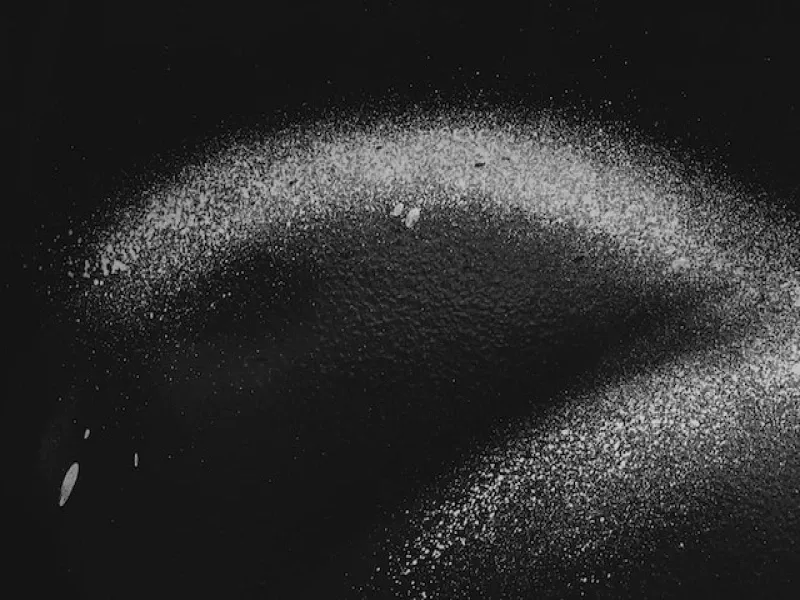
How should you wash synthetic clothing?
When we wash our synthetic clothes according to the washing instructions, they will stay beautiful longer. This also allows us to enjoy our favorite shirts and sweaters for a longer period of time. Don't feel like having to check the laundry label of all your clothes every time to read the washing instructions? That's understandable; for most people, doing the laundry is not their favorite hobby. Therefore, it is much more efficient to learn to recognize how to treat which type of synthetic fabric.
We are going to teach you how best to wash each synthetic fabric. There are many different types of synthetic fabrics on the market. Each individual synthetic fabric has its own washing machine preferences. Some synthetics are even better not to tumble dry. Would you like to learn more about which synthetics exist and how to wash them? Make sure to read on!
What is a synthetic substance?
Synthetic fabrics are manufactured. This means that synthetic fabrics do not have natural fibers, as, for example, most cotton and bamboo shirts do. Instead, synthetic fabrics are made primarily from petroleum. Through special production techniques and chemicals, this is then woven into fabrics. So basically, synthetic fabrics are a kind of plastic. Most synthetic fabrics are therefore quite cheap to produce and are widely used in the fast-fashion industry. Synthetic fabrics make it possible for everyone to always look stylish - and warm in winter! - at an affordable price.
How do you wash synthetic fabrics?
Today there is a wide range of different synthetic fabrics available. Some of these have only been on the market for a very short time. How best to wash each synthetic fabric depends on its unique properties. Read on to find out how best to wash your favorite shirts, cardigans and sweaters made from synthetic fabrics.
Washing viscose/rayon clothing
We begin our list with viscose, also known as Rayon. This semi-synthetic fabric is a fusion of cotton and wood cellulose. This material is prone to shrinking under the wrong conditions. First of all, make sure not to wash garments made of viscose too hot, but especially not too long. We do not recommend using the dryer. This, too, involves risk in terms of shrinkage. It is best to let it air dry lying down.
Acrylic/polyacrylic
The next synthetic fabric is Acrylic. This fabric is also called polyacrylic. Acrylic is similar in appearance to wool. The two are also similar in terms of washing: you should not wash acrylic too hot either. In fact, acrylic should be washed at lukewarm temperatures or as cold as possible. You should therefore also take extra measures if you want to iron it. To protect the fabric from the effects of heat use a pressing cloth during ironing.
Nylon/polyamide
Many people are big fans of nylon, also known as polyamide. This is for good reason; the fabric brings many convenient advantages. Nylon is a water-repellent fabric. In addition, nylon is dimensionally stable and wrinkles little to none. To prevent your garment shrinking in the washing machine, do not use washing programs hotter than 40 degrees Celsius. Also, nylon dries extremely fast! Therefore, you do not need the dryer: a nylon garment can be as good as dry within two hours on the clothesline. If you hang it outside in the summer, it will dry in no time.
Polyester
Polyester refers to a light and soft fabric that also retains its shape well. A polyester garment can last for years because the fabric resists wear and tear well. We recommend washing polyester at 40 degrees. It then dries as quickly as nylon. Because polyester clothing holds its shape well, ironing will not be necessary very often. If it is still necessary, set the iron to the lowest possible temperature.
Lycra/elastane
Most will recognize this fabric by the name Lycra, but it is also known as elastane. If you do not know the most important property of this fabric then you can actually deduce this from its name. This is because elastane is a highly elastic fabric. Surprisingly, recently the elasticity garments made of this material do keep their shape well. To maintain the elasticity of the clothing, you need to keep it away from heat. So make sure to wash and iron Lycra clothing at the lowest possible temperature.
Fleece
The name fleece refers to the soft appearance of the fabric. In fact, the word is derived from the English word for fur. Fleece is known as a nice warm fabric and is therefore often incorporated into blankets for the couch. The manufacturing process of fleece resembles that of felting and takes place to make it look like a lambskin. Fleece has polyethylene terephthalate as its base. This material melts with heat, and so from this you can deduce that fleece has poor heat resistance. Therefore, wash it at no more than 30 degrees to avoid shrinking of the fabric.
The reputation of synthetic clothing and skin irritation
The word "synthetic" does not sound very positive to many people. However, this is not always justified: in fact, new synthetic materials are constantly being developed. The wearing comfort of these new fabrics is often very good. In addition, more and more attention is being paid to making the production processes more environmentally friendly.
Although the wearing comfort of most synthetic fibers today is high, some people may experience skin irritation as a result. This is then caused by the fact that synthetic fabrics are not as good at absorbing moisture. When you sweat, the fibers do not always absorb as well. This can cause redness, bumps, itching or eczema for some people. Therefore, if you have very sensitive skin, it is better not to wear garments made primarily of synthetic materials. Instead, it is better to wear clothes made of natural fibers, such as cotton and bamboo.
Read more
Curious about more fashion tips? Check out our other blogs!
- The history of sneakers
- How to care for your jeans
- Ankle boots for women for every day
- How to polish your shoes the right way
- How to combine flat shoes with a dress of skirt
- How to pair boots with a dress
- 10 helpful tips against sweating
Get inspired, compare and purchase clothes and shoes safely and easily online at Dressed.com.
20 Tips to prevent and remove lint and pilling from clothing









